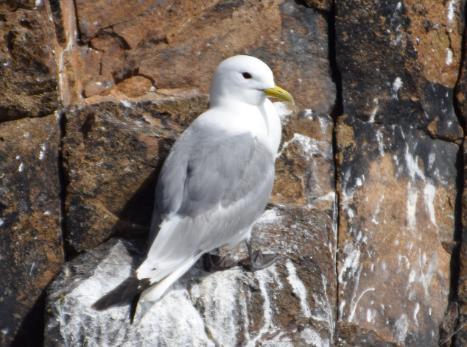Sandeel-mediated effects of climate change on kittiwakes
Many seabird species around the British Isles have shown steep declines in numbers in recent years. One of the main reasons for these declines is thought to be a lack of food of sufficient quality during the breeding season. In particular, declines in the lesser sandeel (Ammodytes marinus), a key prey for many seabirds in this regions, are thought to have had particularly detrimental effects on seabird breeding success. The cause of the drop in sandeel numbers is unknown, but the main hypothesis is that it is caused by climate-induced changes in the zooplankton community on which the sandeel relies for food, potentially in combination with overfishing.
In this project, the aim is to understand how climate change will impact the black-legged kittiwake (Rissa tridactyla) through effects on lower trophic levels, sandeel and zooplankton. First, we will use available data to pinpoint what aspect of sandeel dynamics the kittiwakes are responding to. Second, we will make the connection to lower trophic levels by using models of sandeel dynamics that are driven by oceanographic conditions and zooplankton availability. This will allow us to explore how different oceanographic conditions and climate-induced changes in the zooplankton community will impact sandeels, and in turn, how these changes in the sandeel population will impact kittiwakes. Finally, we can use this framework to explore different scenarios of oceanograhic change and draw conclusions regarding how these may impact kittiwakes and other sandeel predators.
Researchers
Agnes Olin (University of Glasgow, University of Strathclyde)
Neil Banas (University of Strathclyde)
Ruedi Nager (University of Glasgow)
Peter Wright (Marine Scotland Science)
Funding
Funding for the project comes from Marine Alliance for Science and Technology for Scotland, University of Strathclyde and University of Glasgow.


